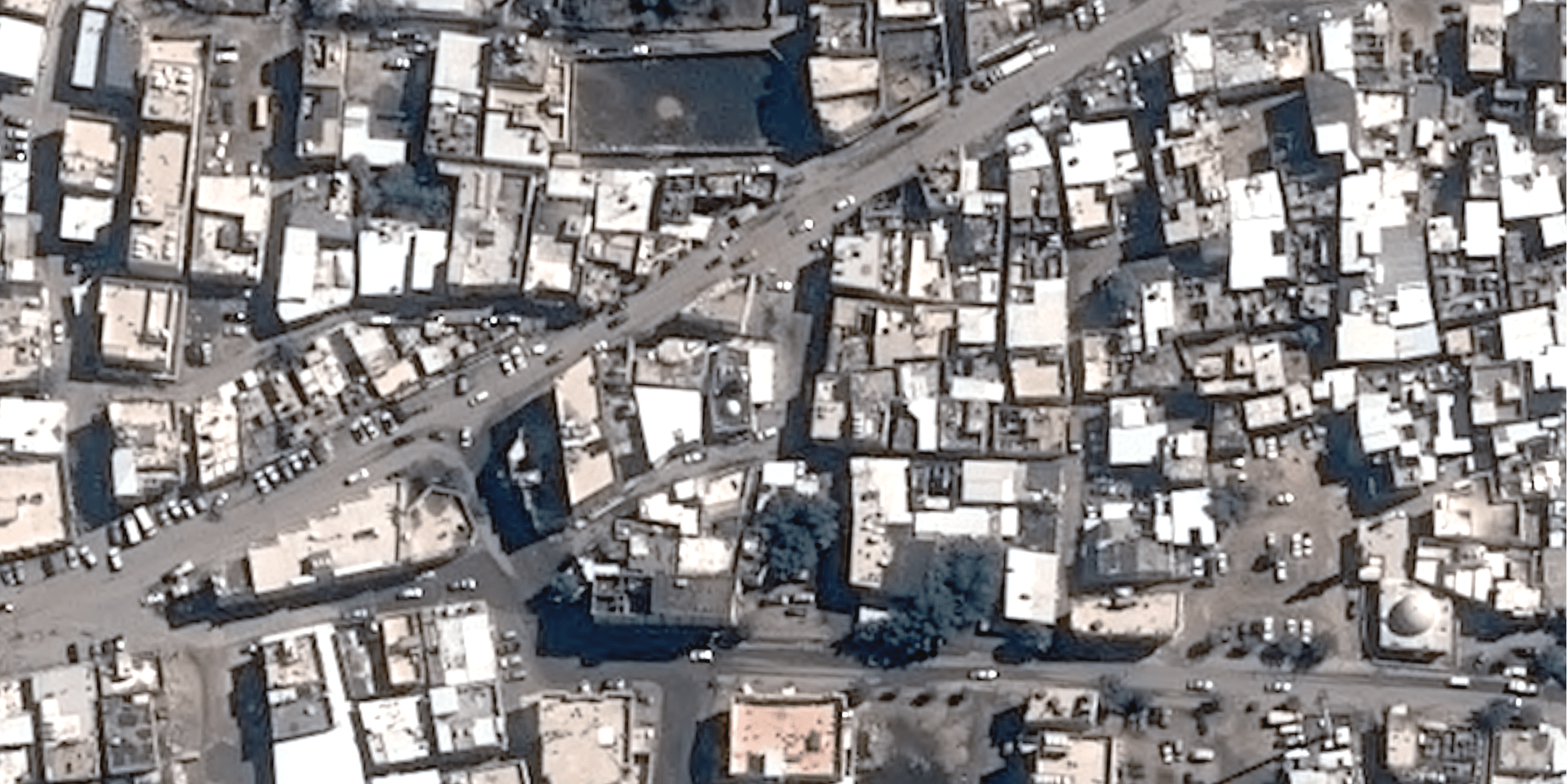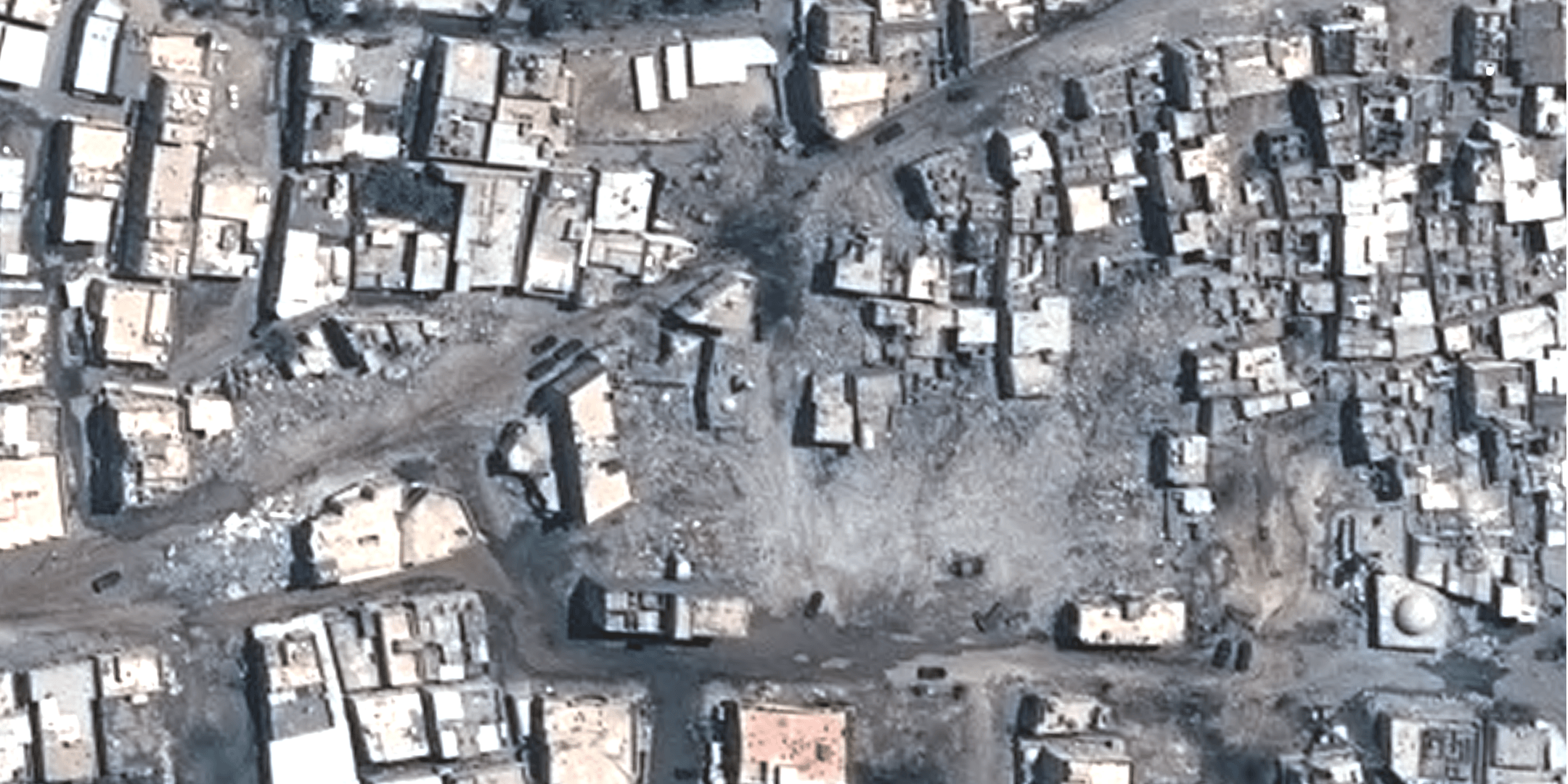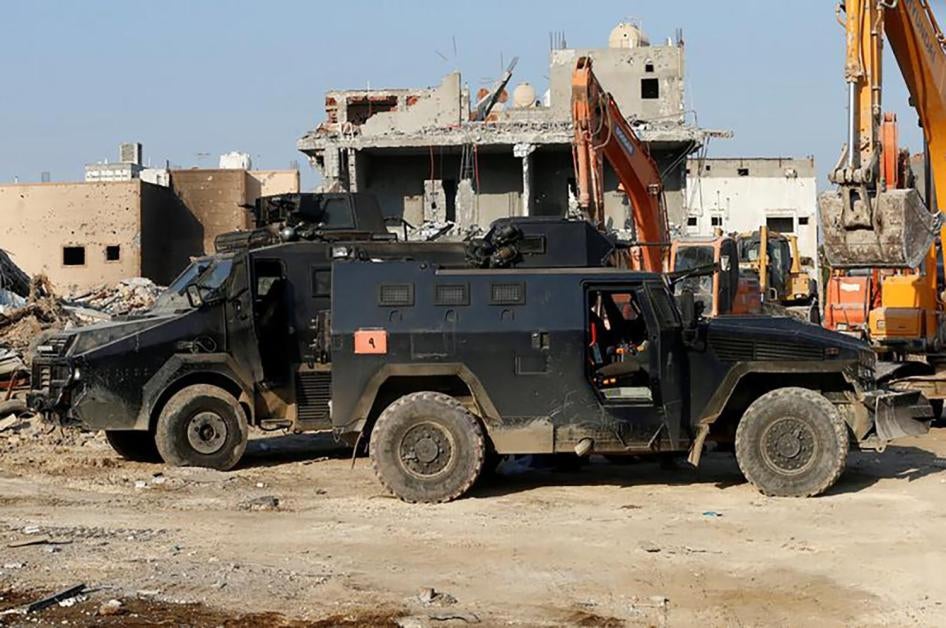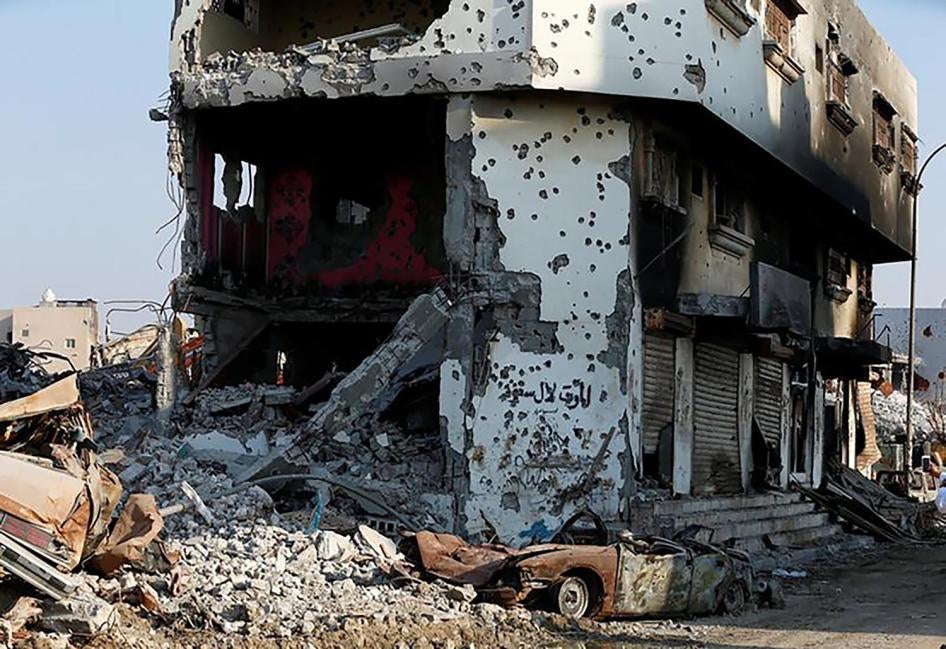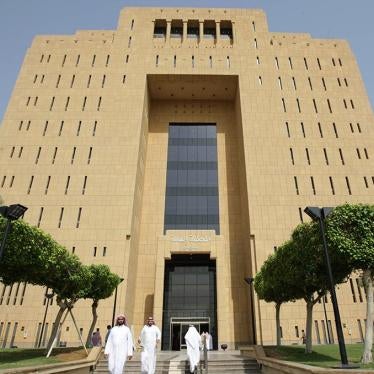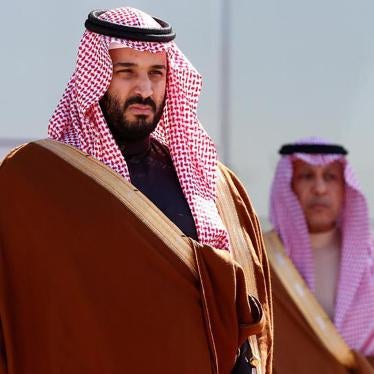(Beirut) – Saudi security forces have surrounded and sealed off the predominantly Shia town of Awamiya in July 2017 as they confronted an armed group hiding in a historic neighborhood slated for demolition, Human Rights Watch said today.
The violence in the Eastern province, which began in May, has resulted in deaths and injuries among the residents, local activists said, and caused significant damage to the town, based on an assessment of satellite imagery. Residents and activists say that most residents have fled Awamiya, and those who remain lack essential services such as medical care. The town remains sealed off.
“Saudi security forces should provide essential services to trapped Awamiya residents and make sure they can move in and out of the town safely,” said Sarah Leah Whitson, Middle East director at Human Rights Watch. “Saudi authorities should also immediately and credibly investigate whether its forces used excessive force in Awamiya.”
Saudi Arabia announced plans to demolish and redevelop the al-Musawara neighborhood of Awamiya, Qatif governorate, in 2016, citing health and safety reasons. Demolition began on May 10, after al-Musawara residents were evacuated, but met with armed resistance. Awamiya residents told Human Rights Watch that security forces have fired into populated areas far from al-Musawara, killing residents, occupied a public school, closed clinics and pharmacies, and prevented essential services such as ambulances from reaching the area.
Security forces engaged in shoot-outs with an unknown number of armed men inside al-Musawara, and on July 26 brought in additional armored vehicles and sealed the town’s entrances and exits, residents and activists said.
Awamiya has a longstanding reputation of opposition to Saudi rule and has been the site of protests about government discrimination against Saudi Shia. It is the hometown of a prominent cleric, Nimr al-Nimr, who was executed in January 2016 over his encouragement of protests in 2011 and 2012. The execution sparked a series of events leading to a breakdown of diplomatic relations with Iran and heightened sectarian tensions across the Gulf region.
On July 28, Canadian Foreign Minister Chrystia Freeland stated that she was “deeply concerned” about photos purporting to show Saudi security forces using Canadian-made Terradyne Gurkha RPV-model armored vehicles. She ordered an investigation into how Saudi forces are using the vehicles. Saudi forces have also deployed another type of armored vehicle manufactured by the South African company F & R Catai to Awamiya. The automatic cannon in this vehicle’s turret can penetrate and cause considerable damage to buildings and other infrastructure.
Human Rights Watch analyzed satellite imagery that shows extensive damage to the neighborhood and the town’s main commercial street bordering it. While much of the damage is due to the demolition, the images also show buildings and areas damaged by the violence.
Activists and residents said the armed men are on most-wanted lists authorities have issued since 2012 for protest-related crimes in the area.
Saudi Arabia announced on August 10 that security forces had forced nearly all “terrorists and criminal elements” out of al-Musawara, and authorities took international journalists on a tour of the neighborhood on August 9.
Saudi activists said the violence has killed more than a dozen people, both Saudis and foreigners, in addition to at least five armed militants. A Saudi Interior Ministry official told Reuters that eight members of the police and four members of the special forces had been killed. The Saudi authorities have not released information on resident casualties. Reuters reported that a 3-year-old boy died on August 9 from injuries suffered when an armored vehicle fired on his family’s car in June.
Saudi authorities should immediately investigate the circumstances of all casualties related to the use of force by police and security forces and hold security forces accountable if it is shown that they fired at residents unlawfully, Human Rights Watch said.
Five residents interviewed said that Saudi security forces have put people in Awamiya at risk, arbitrarily shooting at or arresting those who emerged from their houses. The residents said that to their knowledge Saudi authorities never issued an order for people to leave Awamiya, and their only chance to leave safely has been for short periods allowed by security forces since July 26.
The residents said that local volunteers and activists coordinated the evacuation without assistance from Saudi authorities. They said that security forces turn away anyone who attempts to return to Awamiya to check on relatives or recover property or possessions.
Local residents said that people have been fired at and injured in areas such as al-Shukrallah, al-Jumaymah, and al-Rif neighborhoods, which are west of security forces who are stationed between these neighborhoods and al-Musawara to the east. The residents said they had not seen any armed militants in these areas.
The five Awamiya residents and three activists close to the situation said that a majority of the town’s inhabitants fled after security forces escalated the situation on July 26. They said that most fled between July 27 and 28 when the town’s electricity was cut off for more than 24 hours, leaving people exposed to temperatures of up to 50 degrees Celsius (122 Fahrenheit) without air conditioning. Residents and activists said that the electricity grid had been damaged by gunfire, but did not know who was responsible.
The residents said that security forces closed all of Awamiya’s clinics and pharmacies in May, which they believed was to ensure that militants could not seek medical treatment. Since July 26, they said, security forces had not allowed emergency services to reach the wounded or taken steps to provide humanitarian assistance to people who remain there, though all the shops in the area were closed.
They also said that security forces had occupied a boys’ secondary school, which borders al-Musawara, and circulated a video that they said showed government forces firing a rocket-propelled grenade from the roof into al-Musawara. Human Rights Watch independently verified the video location by matching landmarks and rooftop features visible in the video to corresponding locations in satellite imagery recorded during the fighting. Human Rights Watch also determined that the rocket-propelled grenade was fired into al-Musawara in the general direction of the Ahmed bin Mahmoud mosque.
The United Nations experts on cultural rights, adequate housing and extreme poverty condemned Saudi Arabia’s destruction of al-Musawara on May 24, noting that the operation had forced “residents out of their homes and of the neighborhood, fleeing for their lives.” They stated that the destruction of al-Musawara would “erase the traces of … historic and lived cultural heritage.”
The Saudi government should publicly order the security forces to abide by the United Nations Basic Principles on the Use of Force and Firearms by Law Enforcement Officials, Human Rights Watch said. The Basic Principles state that security forces shall “apply non-violent means before resorting to the use of force and firearms,” and that “whenever the lawful use of force and firearms is unavoidable, law enforcement officials shall: (a) Exercise restraint in such use and act in proportion to the seriousness of the offence and the legitimate objective to be achieved; (b) Minimize damage and injury, and respect and preserve human life.” Furthermore, “intentional lethal use of firearms may only be made when strictly unavoidable in order to protect life.”
The Basic Principles further provide that, “[i]n cases of death and serious injury or other grave consequences, a detailed report shall be sent promptly to the competent authorities.” The findings of the investigation should be public and result in appropriate disciplinary action or prosecution.
Saudi Arabian security forces should also refrain from using schools, which can cause damage or destruction to important educational infrastructure and interfere with children’s right to an education in safety.
“Saudi Shia in Awamiya face discrimination every day, and for the last three months have been caught in the crossfire,” Whitson said. “Saudi authorities should take immediate steps to allow people to safely return home, allow business and clinics to reopen, and compensate residents for property damage and destruction caused by security forces.”
Accounts from Al-Musawara Residents
One resident, “Sami,” whose name, as with others interviewed, has been changed for his protection, said he had not worked since the fighting started because his shop is on the main street near al-Musawara, in the area where security forces had sporadically opened fire on shops and homes. “My shop is covered in bullet holes,” he said. “I am certain that security forces are responsible because the size of the bullets are medium and large, which only security forces possess.”
Sami said he came under fire on June 11 while driving on a street where security forces were stationed, far from the fighting around al-Musawara: “I was out shopping with a friend for a Suhur [Ramadan early morning] meal when we started hearing gunshots. I was in my car ... driving back home when bullets started hitting the ground on the road where I was driving. I quickly turned off the lights of my car and drove toward narrow streets to hide in neighborhoods where apartment buildings could protect me from gunshots.”
“Ali,” a Awamiya resident who fled on July 30, said: “The security situation in Awamiya has been terrible for the past 80 days. While I was still in Awamiya, the town was constantly bombarded by shelling and security forces were going around shooting in residential neighborhoods at random. We were too scared to leave our homes and most of the shops were shut down or burned. Anything that moved became a target.”
Another resident, “Ahmed,” said that he came under fire driving in al-Shukrallah on July 29: “I am from the al-Jumaymah neighborhood. I went in the morning to help my mom and dad. When I left I went toward al-Shukrallah to try to leave Awamiya via a back road through farms. I was driving between houses when someone fired at me and the bullet hit the house next to my car. I saw an armored vehicle at the end of the street … I never saw any armed militants in this area.”
“Hadi,” a Awamiya resident who works on an informal committee assisting those fleeing Awamiya find places to stay, said that another member of the group, Mohammad al-Rheimani, was shot on August 3 while helping residents leave Awamiya at an area west of security forces’ positions, in the opposite direction from al-Musawara.
Hadi said that he believes that 20,000 to 25,000 of the towns’ 30,000 residents had fled, most since July 26. He said that Saudi authorities had housed a small number of them in private apartments in nearby Dammam, but that the vast majority were staying with relatives or renting apartment across the Eastern Province.
